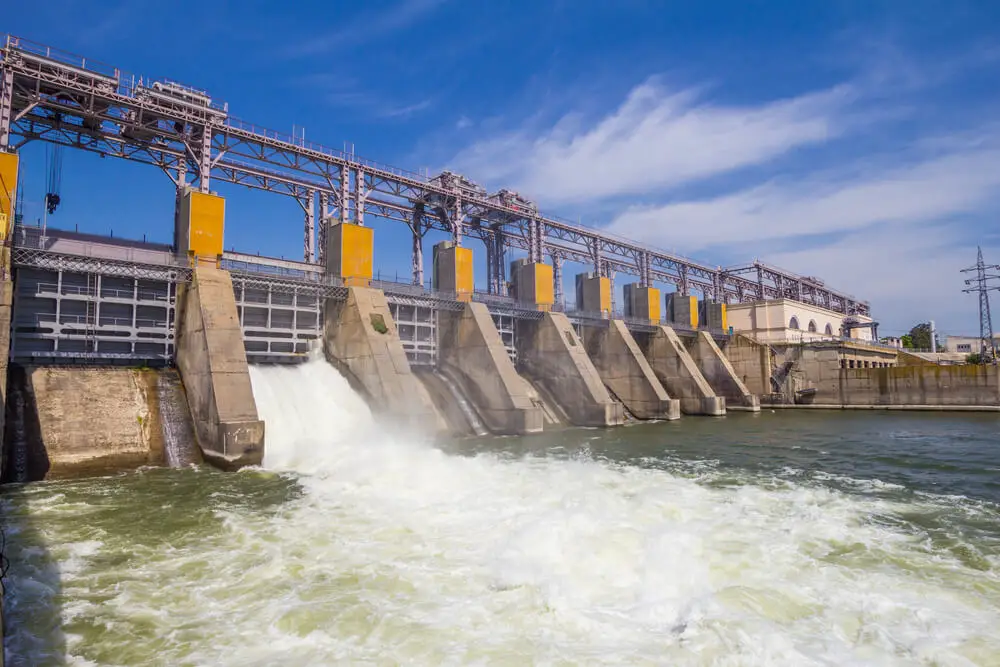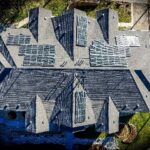Are you thinking of installing an MHP system but aren’t sure what the pros and cons of micro hydro power are? Then take a look at the advantages and disadvantages of this renewable energy source in this article.
| Pros of Micro Hydro Power | Cons of Micro Hydro Power |
|---|---|
| Renewable energy Minimal maintenance Low distribution and running costs | Not suitable for every location Less power output in the summer Expensive to install |
Micro hydro power systems are expensive to install so weighing up the pros and cons of this energy system is really important.
In this article, we’ve included more information that you must know about micro hydro power before you install the system. Make sure you check it out.
What Are the Advantages and Disadvantages of Micro Hydro Power Plants?
Are you thinking of installing a micro hydro power plant on your property? Mini MHP plants are often built in residential areas for homeowners that are living off the grid.
But there are a couple of things you should know about these plants before you decide to install one.
Take a look at the following list of advantages and disadvantages.
| Advantages of Micro Hydro Power Plants | Disadvantages of Micro Hydro Power Plants |
|---|---|
| It only takes a small flow to generate electricity Continuous supply of renewable energy Minimal maintenance Low distribution and running costs More energy is generated in the winter and evening | Not suitable for every location Less power output in the summer Expensive to install Environmental impacts need to be considered Energy expansion is not always possible |
Let’s talk about the advantages. MHP plants are a continuous supply of renewable energy as water continues flowing throughout the day and night.
We all need more power in the winter and in the evening and MHP generates more energy at these times.
The plants also have low running costs and can save up to 37% of the costs of solar installation.
What about the disadvantages? Micro hydro power plants are expensive to install. Not only that, but a lot of careful planning must go into their installation.
This includes scouting the area and addressing the low-level environmental effects and the impact on the ecology and the civil infrastructure.
Small streams may inhibit future plant expansion as the demand grows.
What Are the Advantages of Micro Hydro Power?
Micro hydro power is becoming increasingly popular as a renewable source of energy. But installing this system is expensive and takes a lot of planning. It is good to know all of your facts before you start the installation process.
So, what are some of the advantages of micro hydro power? Let’s dive right in.
Only a small flow is needed to generate energy. Even if your stream drop only measures 1 meter, you can still generate electricity.
Only a small flow of a few liters per minute is enough for a mini micro hydro power system.
The energy is available when you need it the most. We need more electricity in the evenings and in the winter.
Micro hydro power plants tend to generate more electricity in the evenings and winter when the water flows faster.
This means that during the moments of high electricity demand, the plant can keep up the pace.
Continuous supply of energy. Unlike solar energy, MHP plants can continue generating electricity even when the weather is cloudy.
In fact, when it rains and the weather is inclement, the plant works even better. This is why MHP plants can save up to 37% of the costs of a similar-sized solar panel installation.
What Are 5 Disadvantages of Hydropower?
There are a lot of good things to be said about micro hydro power. But of course, we cannot shut our eyes to the disadvantages of these systems.
Knowing the disadvantages helps you to be prepared for the upcoming challenges. So, let’s take a look at 5 disadvantages of hydropower.
- It is not suitable for every location
- The power generation may reduce in the summer
- It is expensive to install
- It can impact the environment’s ecology and infrastructure
- It is not always possible to expand the plant to meet the growing demands of the area
Hydropower is not suitable for every location as there needs to be a drop of at least 1 meter for it to generate power.
Also, in the case of small streams, the water flow could reduce significantly in the summer. This could make
it is difficult for your plant to reach its demand in the warmer months. And as hydropower is expensive to install, you want to make sure it will be worth your while.
Another set of disadvantages is presented by the limitations of the area. If your stream is small, you may not be able to expand your plant as your demand for electricity grows.
You also need to consider the impact the plant will have on the ecology and the civil infrastructure.
Low-level environmental effects may make it impossible to build a plant.
What Are the Advantages and Disadvantages of Hydropower?
| Advantages of Hydropower | Disadvantages of Hydropower |
|---|---|
| Renewable energy. The source of the energy does not damage the environment. Free energy source. The water will continue flowing at no cost to the user. Minimal maintenance. Hydropower has low maintenance costs in comparison to other sources of renewable energy. Low distribution and running costs. You can distribute it up to 1 kilometer from the power plant. Continuous supply of energy. Energy continues to generate at night and in the winter, unlike solar power. Minimal water flow. A drop of just 1 meter is needed for small plants. | Not suitable for every location. The plant will not work in small streams or stagnant bodies of water. Less power output in the summer. The power output could reduce greatly during warmer weather and drought seasons. Expensive to install. Hydropower is expensive to install. It costs thousands of dollars to install per kilowatt. There are possible environmental impacts. You need to consider the effect on the ecology and low-level environment before installing. Energy expansion is not always possible. Your need for energy may grow over time but the specifics of your body of water determine whether you will be able to keep up with the demand or not. |
What Is One Disadvantage of Using Hydropower?
There are more advantages to using hydropower than there are disadvantages. But we cannot ignore the disadvantages either.
One of the biggest challenges that comes with this energy source is the site characteristics. Let’s explore this difficulty a little further.
When it comes to site characteristics, the location of the hydropower plant and the location where the energy is needed cannot be too far away from one another.
The distance between these two points should not exceed 1 kilometer. This puts a limit on your usage range for your hydropower plant.
Another site characteristic is the speed of the water flow and the size of the drop. The minimal requirements mean that not all bodies of water will be suitable for use in hydropower.
The expense of installing the system will make sure you only install one where it will be very cost-effective. The minimal drop for hydropower is 1 meter for small home systems.
Site characteristics also include not just the best drop and flow of the water but are also dependent on their minimal flow at times when the water is more stagnant or when the water level reduces.
This occurs during the summer months. You will need to ensure that the minimal generation at the site will produce enough energy to keep the plant going.
How Much Does a Micro Hydro Power System Cost?
Micro hydro power systems are expensive. You will pay thousands of dollars per kilowatt you install. Just how much are we talking? The price varies from $3,800 to $8,200 per kilowatt installed.
It is usually the case that you are able to get a cheaper price per kilowatt if you install more. But this will only be possible if your site allows for a larger system.
The maintenance costs of micro hydro power systems are low. The system also lasts a very long time.
From the installation, you can expect your hydropower plant to last at least 40 years. Some can last up to 100 years.
So, installing it is very cost-effective. However, you should note that your maintenance costs will increase with the age of the plant.
Final Thoughts
Knowing the pros and cons of micro hydro power helps you to decide whether or not it would be cost-effective for you to install such a system.
In this article, we have considered a few pros and cons that help us to know what installing hydropower really entails.
Some of the pros included the fact that this system generates electricity even in small bodies of water and all throughout the day.
But we cannot ignore the fact that these systems could affect our ecology and be tricky to expand to meet growing demand.



